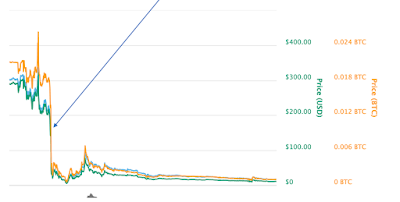One interesting phenomena are ICO’S in the cryptocurrency (a decentralised virtual currency)
field. An initial coin offering (ICO) is a method of crowdfunding,
which can be a source of capital for a company. These ‘tokens’ supposedly
become functional units of currency if or when the ICO’s funding goals are met
and the project launches. There are thousands of different ICO’s are what’s
interesting are the persuasion techniques they implement to try and make you
invest.
For example;
A sense of
hierarchy suggests certain ICO’S are better than others that is established within
the investor. The gold ICO’S are suggested, but not mentioned to be a better
investment than the silver ones. Numerous
studies have explored the role of authority (Milgram, 1963; Burger, 2009) and
subsequent alteration of behaviour. A professional website that places specific
ICO’s into categories, more than likely gives off the impression that reasons
behind placement for each ICO derive from well-established authoritarian figures.
Many ICO’S even offer deals, such as two for one if you buy now, all suggesting
an investment seems only logical.
A description is also provided which incorporates the
persuasion technique of scarcity. A closing date is provided for each ICO, which
creates a feeling of emergency to any potential investor. The ICO presents
itself in limited stock, and that an investment must be made soon before the
closing date. Studies have shown that people often choose items that are of
limited-quantity (Aggerwal, Jun, & Huh. 2011). When you combine these
persuasion techniques & the promise of making quick money, many individuals
may feel in-overly pressured to invest. This is particularly worrying when you
take into consideration some ICO’S that were discovered to be PONZI schemes (fraudulent
investment operations).
Bitconnect – losing
almost all its value in ONE day
after it was revealed it was a Ponzi
 |
References
Burger, J. M. (2009). Replicating Milgram: Would people still obey today? American Psychologist, 64, 1–11.
Milgram, S. (1963). Behavioural
study of obedience. The journal of abnormal and social psychology, 67, 371-
378.



No comments:
Post a Comment
Note: Only a member of this blog may post a comment.